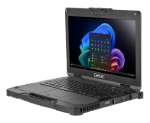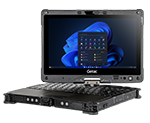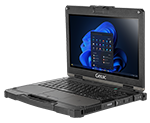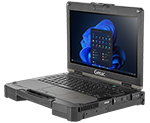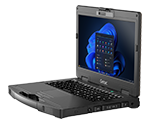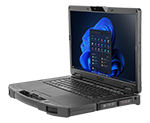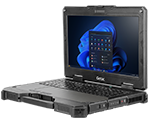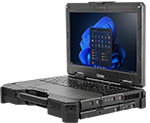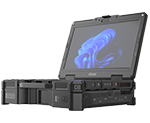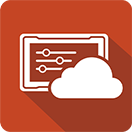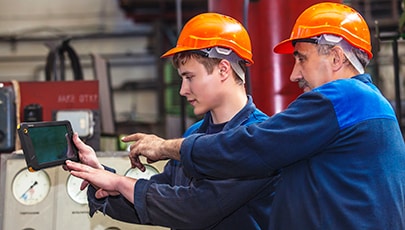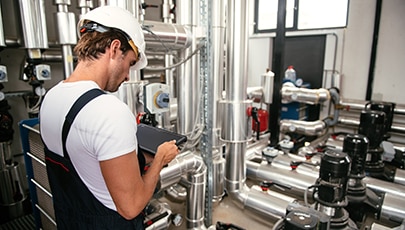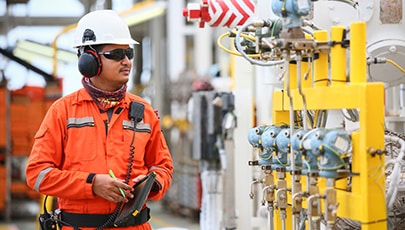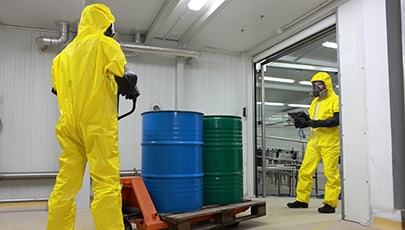The Rise of Smart Workwear
Protective workwear and wearable gadgetsi for oil industry workers are increasingly effective, efficient, and fashionable. What was once viewed as a cost burden is now seen as a worthwhile investment in employee safety, staff morale, and a reduction in corporate health insurance premiums.
Protective Workwear
Given the industry’s health-and-safety record, which is a product of extremely tough conditions, both European and North American regulations require all technicians and service industry employees working in the vicinity of a rig to wear flame-resistant clothing, steel-toe boots, hard hats, personal gas monitor and safety glasses.ii In recent years, however, innovation in workwear has led to the development of specialist advanced textiles suitable for extreme temperature, fire, and water.
For example, a Norwegian oil industry workwear provider, Wenaas
iii, in collaboration with the Norwegian research center SINTEF, has designed workwear dedicated to oil workers operating in extremely cold weather climates like Siberia, Alaska, Canada, and the Barents Sea. Using a combination of fifty percent wool and advanced textiles combined in three layers, their clothing is designed to protect and keep workers warm. The intermediate layer is reminiscent of a medium-thick fleece. It has a three-dimensional and airy structure, which is breathable when the wearer is active but provides insulation when the wearer is at rest.
Another innovation in protective clothing comes from Britain, where Simon Lamont’s start-up Iron Oceaniv is developing protective clothing using his Centurion 3 fabric. It protects against flying metal fragments from accidents. Also, being tough and fire retardant, this fabric is designed to become thermally active in contact with water. It helps to protect against cold shock from exposure to cold waters. Cold shock can take place when body temperature decreases quickly, potentially leading to cardiac arrest. It can also induce a panic that can cause gasping and breathing in water. It is a constant potential danger for offshore workersv.
In contrast to extreme-cold workwear, oil-industry workers in the Middle East are the beneficiaries of indigenous innovation. Researchers at Qatar University have developed a solar-powered ‘cooling’ hard hatvi in which an internal fan at the crown of the hard hat blows air over a cold pack and onto a worker’s face. The breeze generated by this hard hat can reduce skin temperature by around 18 degrees Fahrenheit (10 degrees Celsius).
Work boots have advanced beyond the practical requirements of comfort, toughness, water resistance, and flame-resistance to protect feet during a long shift and from everyday incidents such as items being dropped. A case in point is the NANOlite footed Oliver range of boots,vii providing greater comfort and wellbeing. The gently-raised surface of the sole massages the foot during movement, promoting a greater blood flow, which helps reduce fatigue. The perforated foam air control layer enhances air circulation, reducing odor, and foot protection come from their XRD® technology,viii which is not only comfortable, flexible, and lightweight, but also frees the foot from the traditionally rigid, bulky and constricting stiffeners and weight of external metatarsal guards. On impact, the XRD® high-performance molecules create a unique protective shield that absorbs up to 90% of the most intense force – hit after hit – and it exceeds ASTM F1614-11 testing standards.ix
Wearable Gadgets
An addition to industry-wide safety precautions and detection systems is the H2SProfessional Gas Detector watch.x Its patented hydrogen sulfide gas sensor can detect the most minimal levels of this lethal gas and issue an alarm warning. Designed by North Eagles of Switzerland, this watch can be used instead of, or in addition to, a worker’s clipped vest device. In the event of an escape of this silent killer, a flashing LED light indicator on the dial, and a high-volume 96-decibel audio alarm is set off, and the watch also vibrates.
A combination of concern for employees’ health and wellbeing plus high employee insurance costs has encouraged companies to monitor the activity levels of employees. Wearable gadgets such as fitness trackers made by Apple and Fitbit, amongst others, have attracted personal as well as corporate sales. For example, BP’s North American business
xi
has issued over 24,000 fitness trackers to employees on its oil rigs and refineries to reduce staff insurance costs. For employees, these wearables help monitor vital signs and bodily functions, often uncovering hidden ailments before they become a problem. At the same time, they could encourage staff to increase their activity levels for discounts on their health insurance premiums. As Chris Brauer, Director of Innovation at Goldsmiths, University of London, explains, “underwriters are more trusting of these devices than the self-reporting of employees.”xiiThe quest for cost reductions and productivity increases has encouraged firms, including Saudi Aramco, Schlumberger, FMC Technologies and Sullivan Solar Power to issue staff in the field with smart glasses and tablet devicesxiii which can transmit key data, schematics, maps, guidelines or instructions as, and when, needed. Communication is usually through Wi-Fi connected optic display activated by speaking, tilting one’s head, or even touching the device.
In the case of Wi-Fi-enabled smart glassesxiv and smart earphones, it is possible to provide immersive and interactive remote collaboration, including virtual over-the-shoulder training, thus facilitating on-the-job training. With smart glasses,xv employees can perform tasks even if they cannot remember all the procedures while adjusting or repairing a device in the field.
The adoption of internet-connected gadgets such as smart glasses and smartwatches by energy industry field workers reflects the growing technological complexity of work and the employer’s demand for high performance. Smart or intelligent clothing and smart gadgets are the new medium for monitoring, reporting, and training, and are of benefit to both worker and employer. Also, they are integral to employers’ ongoing efforts to improve productivity and safety in the workplace. Whether the employee is using devices to install a marine drilling riser on the seabed in the Gulf of Mexico or operating drones to carry equipment up to linesmen atop a power pylon in the Scottish mountains.
In summary, innovative wearable technology, whether it is in the form of protective overalls or gadgets, is enabling staff to be more productive and better protected from the elements.
ihttps://www.i-cio.com/strategy/digitalization/item/the-role-of-wearable-tech-in-the-oil-and-gas-industry
iihttps://pksafety.com/blog/ppe-for-oil-and-gas-production-workers
iiihttps://www.wenaas.com/en/about-wenaas/knowledge
ivhttps://www.thecourier.co.uk/fp/business/business-news/809088/self-heating-survival-top-could-save-lives/
vhttps://www.offshore-technology.com/features/featuresmart-clothing-for-offshore-workers-5859575/
vihttp://www.constructionmanagermagazine.com/news/qatar-work7ers-get-air-co6n-har8d-hats/
viihttps://www.architectureanddesign.com.au/suppliers/oliver-footwear/introducing-oliver-footwear-s-all-terrain-65-490-s?sf102675956=1
viiihttps://rogerscorp.com/elastomeric-material-solutions/xrd-technology
ixhttps://standards.globalspec.com/std/783752/ASTM%20F1614
xhttps://www.atimelyperspective.com/hands-on-with-a-watch-that-could-save-your-life-north-eagles-h2s-detector-watch/
xihttps://www.theguardian.com/lifeandstyle/us-money-blog/2015/may/01/employers-tracking-health-fitbit-apple-watch-big-brother
xiihttps://www.smh.com.au/business/workplace/wearable-technology-creeps-into-the-workplace-20150807-gitzuh.html
xiiihttps://web.archive.org/web/20160827200123/https://www.eniday.com/en/human_en/clothing-workwear-equipment/
xivhttps://www.fieldbit.net/augmented-reality-software-for-smart-glasses/
xvhttps://web.archive.org/web/20180417072539/http://www.acrmnet.com/wearable/
